Chapter 2, Part 5
We were at Ulee Lheue, a mid-sized port on Mainland Aceh at the northern part of Sumatra where we would catch the boat to take us to Pulau Weh (Weh Island), one of the outer islands in the sprawling Indonesian archipelago as well as home to Sabang, the country’s westernmost city. India’s Nicobar Islands were just a little over 200 km away from Weh, much closer than the distance from the small island to Jakarta – Indonesia’s capital – some 1,800 km away to the southeast.
Aboard the boat were some government officials, tourists and locals. Once Balohan – the main port on Weh – was in sight, some women took off their headscarves, required by Aceh’s Sharia Law but less-strictly imposed on Weh. We would soon learn that Sabang not only colloquially stood for ‘santai banget’ – very relaxed – but it was also a very different place compared to Banda Aceh, capital of the province.
Weh’s white sand beaches and excellent snorkeling sites, which according to an Italian we met in Java weeks earlier were rich in colorful fish, are the main reasons for tourists to come to this relatively remote corner of Indonesia, despite the implementation of strict Islamic Law in most parts of the province – the only province in Indonesia allowed to do so. Some people even described the fish they saw at diving sites around the island as big as a car and the coral reefs an underwater jungle. The atmosphere of some beaches reminded me of Bali and Lombok where foreigners are free to wear bikinis and beers are sold at shops. The residents of Weh, however, were not allowed to buy any alcoholic beverages, at least not under the watchful eyes of the Sharia police.
During the decades-long armed conflict between the Free Aceh Movement (GAM) and the Indonesian government, Sabang was one of the few places in the province spared from violence. People came to the island with only one thing in mind: to chill. Following a peace agreement signed by GAM and the Indonesian government in 2005, former GAM leaders were allowed to run for office in local elections with some successful results, including Sabang’s current mayor.
However, Weh was not always peaceful and tranquil. In 2004 when deadly waves hit the Indian Ocean following one of the most powerful earthquakes recorded in history, Weh was not spared. Danny, a cousin of the owner of our guesthouse who worked at the local municipality, recounted his experience to us.
On Christmas Day 2004, one day before the 9.1-magnitude earthquake sent deadly waves across the Indian Ocean, Danny’s wife who was in Banda Aceh at that time had to return to Weh to work at night shift in a public health clinic on the island. On the Boxing Day when the earthquake wreaked havoc, Danny was in his car and only after he had turned off the engine did he feel the sheer intensity of the quake. At Balohan the water receded and many fish floundered, and 15 minutes later the first of four waves of tsunami struck the port. Danny recalled the second and third waves as the deadliest for their crushing force ripped buildings off their foundations.
The people on Weh were desperate to communicate with their relatives and friends on Mainland Sumatra as telecommunication line was completely cut off, leaving television their only source of information. Therefore only after a few days since the tsunami hit did they find out about the utter devastation of Banda Aceh, continuously broadcast on national channels. In total less than 10 people died on Weh, compared to more than 100,000 lives lost across the strait. Danny’s wife unexpected commute to Weh on Christmas Day proved to have saved her life.
Eleven years later we came to Sabang and I was particularly impressed with how smooth the roads were on the island and with the fact that most street reflectors were still in place in spite of its location in the far corner of Indonesia. There were also branches of five national banks on the island, each equipped with at least one ATM, definitely not what I expected to see in such a far-flung place in the country. However centuries ago Sabang was in fact far more important and busy than it is today.
Its strategic location at the entrance of the Strait of Malacca – the main sea route connecting China to India and beyond – and its deep, sheltered harbor made Weh a favorable port of call for traders and explorers sailing to and from the Indian Ocean in the past. Ma Huan, one of the people who accompanied Zheng He on some of his expeditions, described Weh’s underwater corals as ‘marine trees’ which grew in the shallow water, reaching the size of 62 cm, and having a soft sheen like jade.
Weh was not only attractive for its beaches and underwater beauty, though. With the help of Suwito, an old caretaker of our guesthouse who migrated from Java decades ago, we discovered one of the best Mie Aceh (local-style noodles) we had ever tried. The restaurant’s unassuming appearance disguised the superb taste of the dishes and drinks served, including a small cup of Kopi Aceh expertly prepared by a young man using only a sieve and several metal containers to pour and ‘pull’ the coffee.
“If it doesn’t taste right, please let me know,” the cook told us once our dinner was served. Nothing tasted wrong. On our second night having dinner there they gave us free desserts made of glutinous rice flour filled with palm sugar that melted in my mouth.
More than 1,600 km to the west of Sabang, a small beach town on the southwestern coast of Sri Lanka was fringed by golden sand beaches, separating the town from the relentless waves of the Indian Ocean. Hikkaduwa has become one of the most popular beach destinations in the country, and like Sabang in Aceh, Hikkaduwa was a tranquil corner of Sri Lanka, spared from the long civil war that engulfed the country for decades.
The ancient people of Sri Lanka and Indonesia had forged strong cultural and economic ties, as proven by the Ratu Boko inscription which mentions about Abhayagiri vihara, built on a hill where Candi Ratu Boko now stands. It was most likely inspired by a monastery with the same name in the ancient city of Anuradhapura on the island of Lanka. However centuries later those relations seem to have faded away from most people’s memory, until recently.
Sri Lanka was the second hardest-hit country in the 2004 Indian Ocean tsunami. During my three-night stay in Hikkaduwa almost everyone I met was startled when they found out that I was from Indonesia. “Many people died in Indonesia,” was the usual comment I heard. The unprecedented catastrophe not only did send deadly ripples across the Indian Ocean, but in the aftermath it did bring people closer than ever.
Kamani da Silva was one of the tsunami survivors from Hikkaduwa, and now she is the owner of the town’s Tsunami Photo Museum. Her heavily damaged house today houses a collection of photos and items retrieved from the surrounding areas as a somber reminder of what nature can do to humans. She recalled how people flocked to the shores as the water receded and exposed what had never been seen before. When the tsunami hit it was already too late for many, but fortunately Kamani had just enough time to run inland to save her life.
Not far from her house was a railway line on which Matara Express was plying the usual route for its routine journey from Colombo to Matara, some 70 km away from Hikkaduwa. At 9:30 in the morning, a massive tsunami, estimated to be up to 9 meters high, crushed the train in a high speed. In total more than 1,700 people died, about 5% of all casualties in Sri Lanka following the earthquake off the coast of northern Sumatra.
“We didn’t know what tsunami was,” Kamani told us. “We have never even heard of the word before.”
Vestiges of the day when the ferocious ocean claimed more than 35,000 lives in Sri Lanka alone were barely noticeable in Hikkaduwa. Kamani’s house was one of the very few palpable reminders of that day. At the time of our visit a big hotel was under construction, and tourism-related businesses were booming. However, a brief look to the past would reveal Hikkaduwa’s symbolism as a place of resilience and hope, and as a reminder that whatever ordeal one might face in life, there is always an opportunity to bounce back.
Click here for the full list of stories from the Spice Odyssey series.

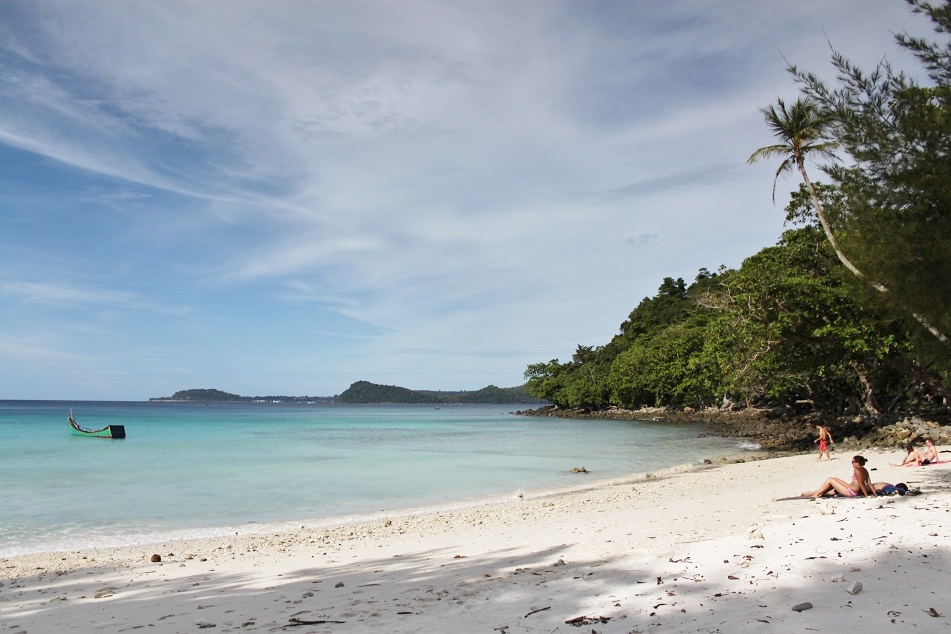



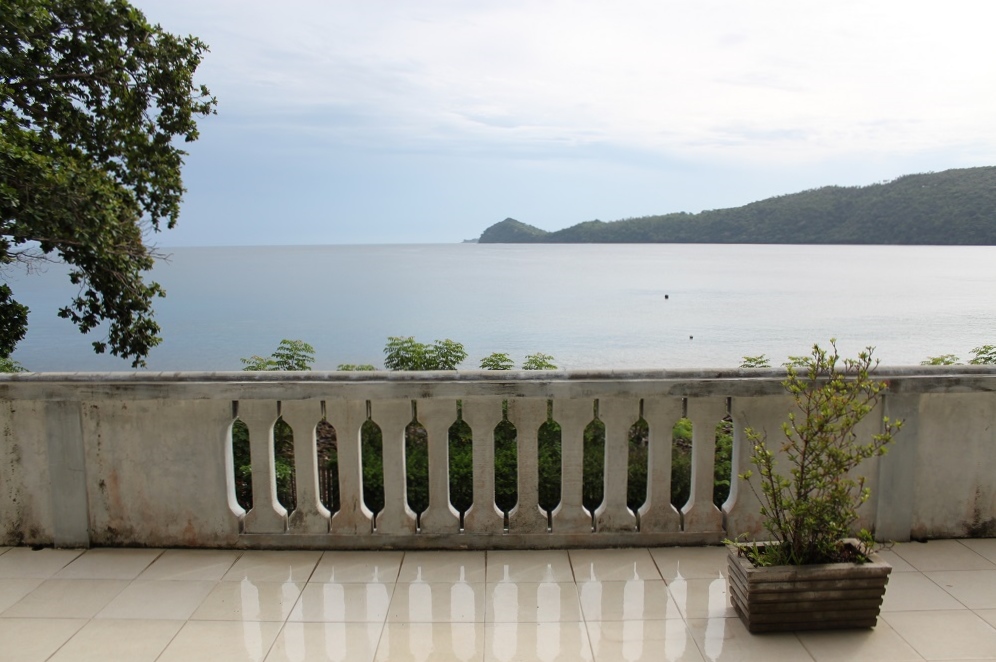
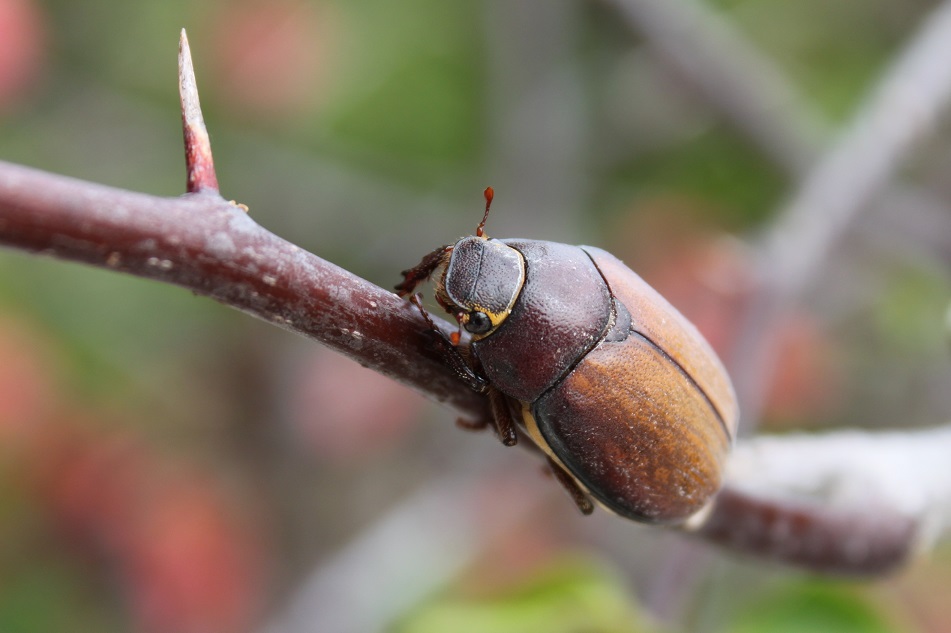
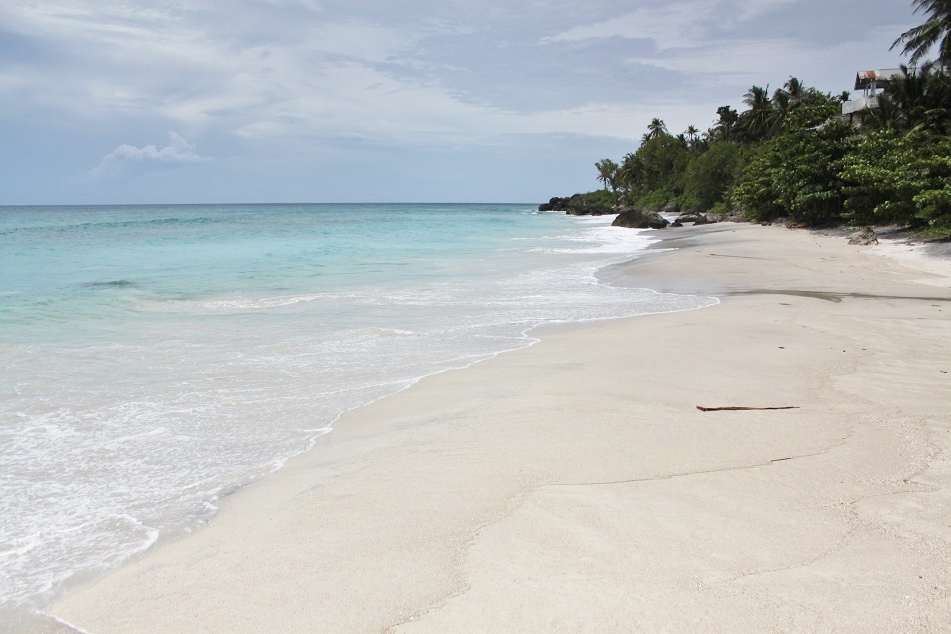


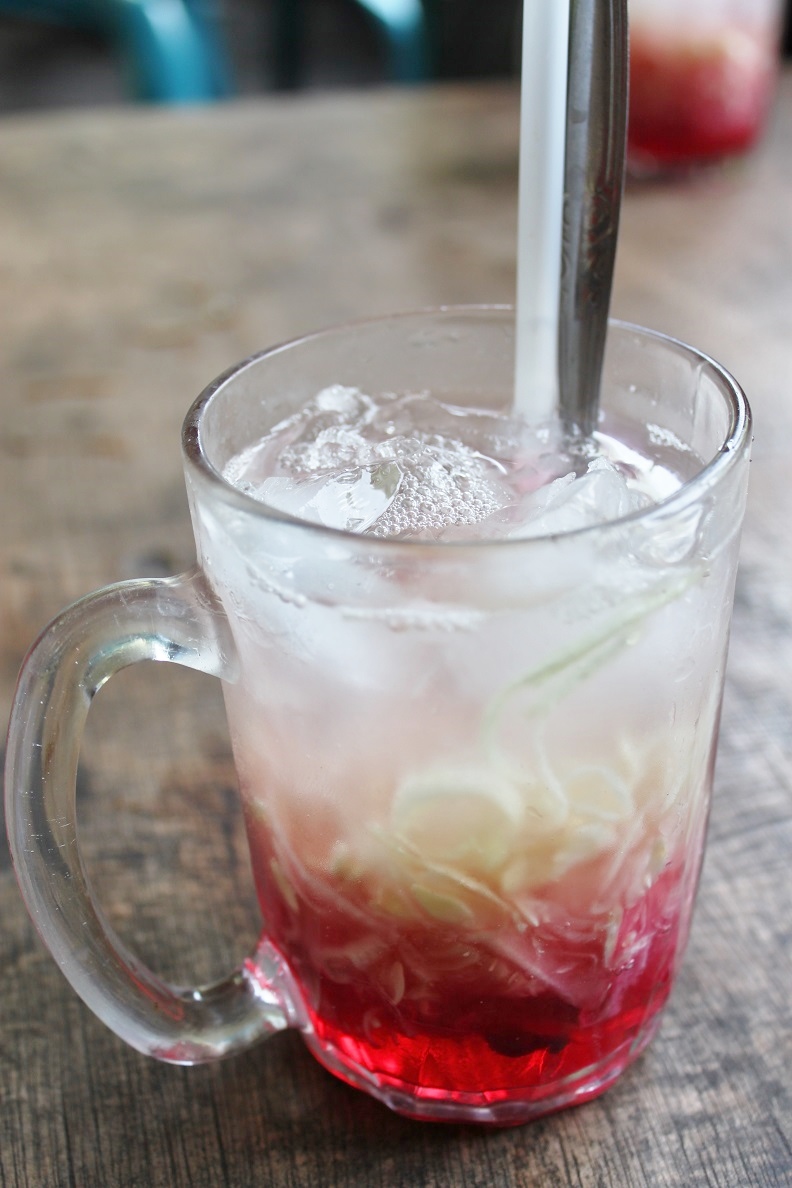
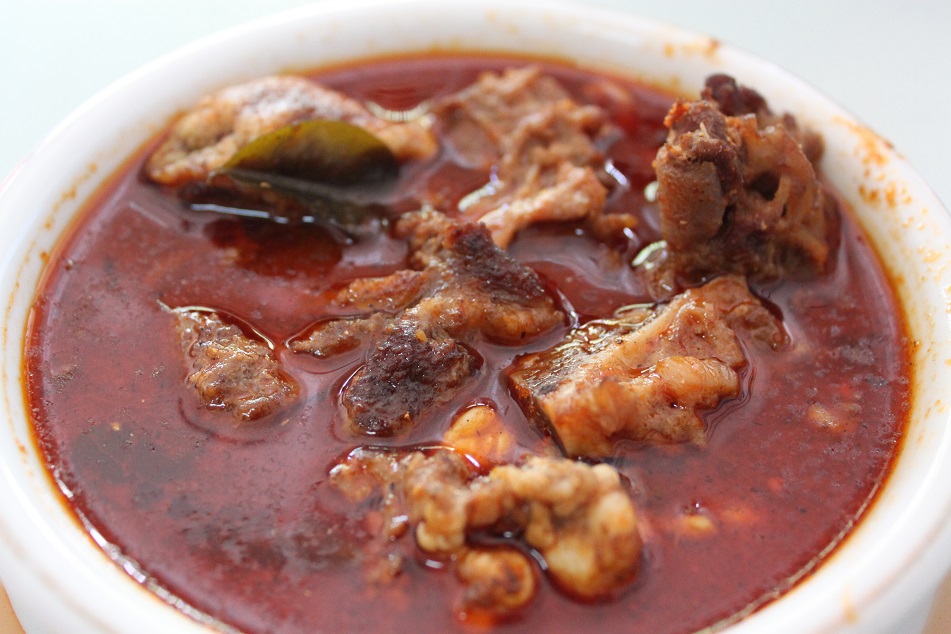

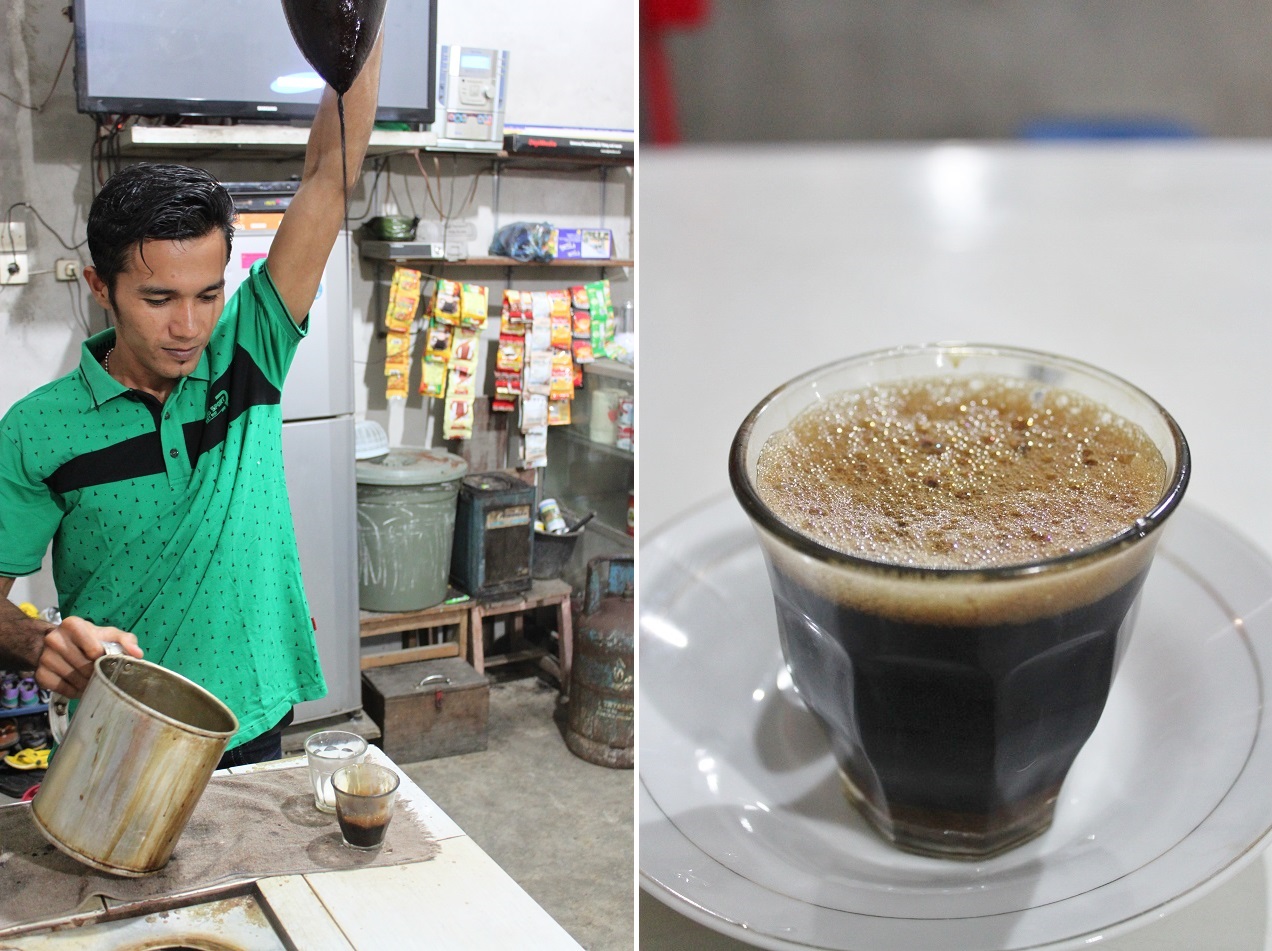
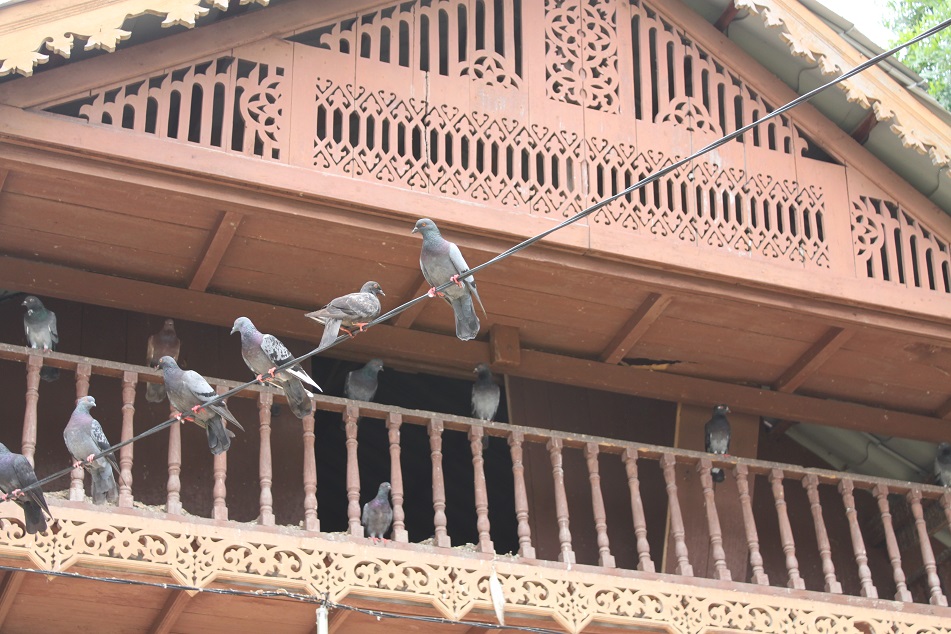
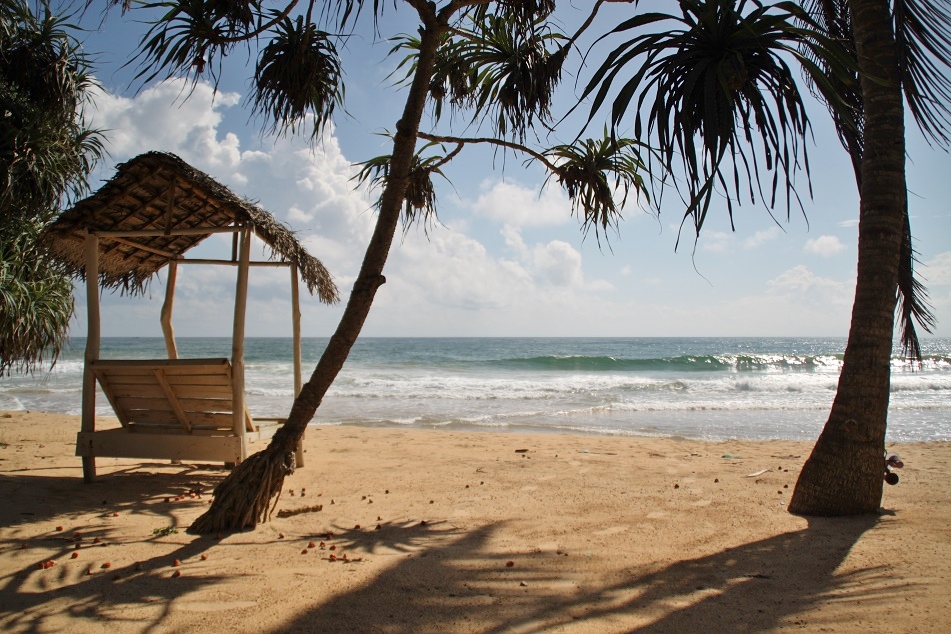


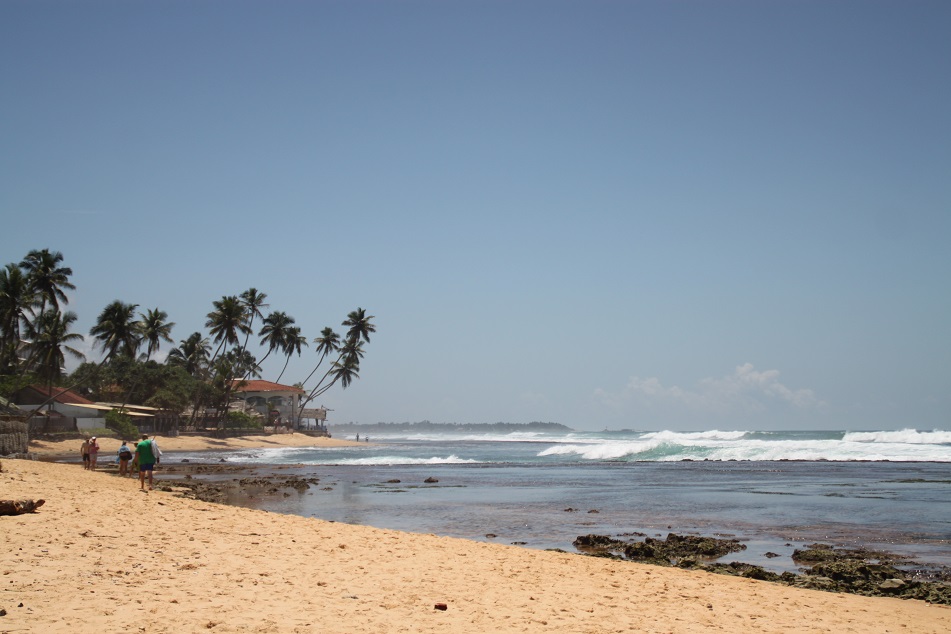

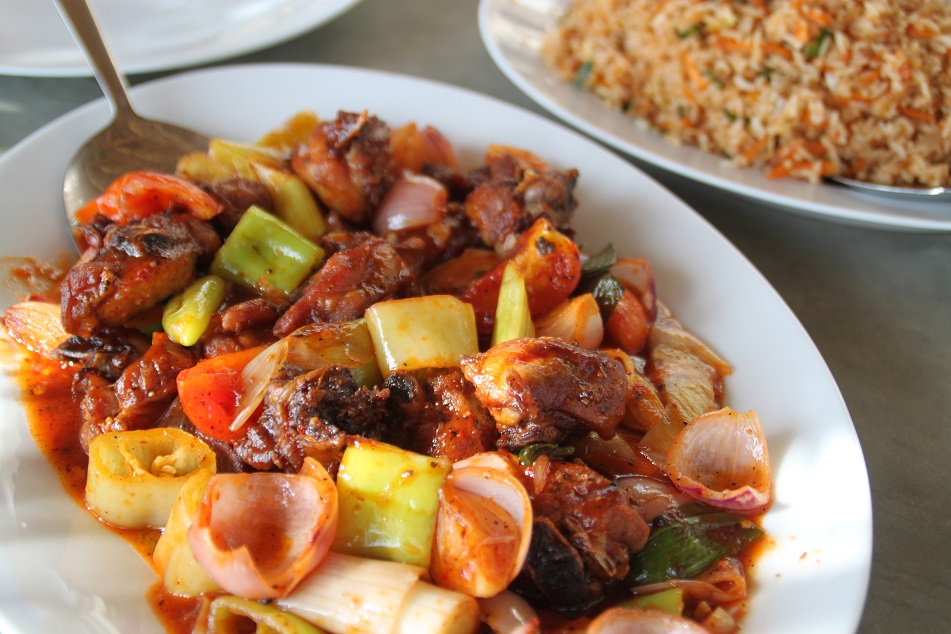
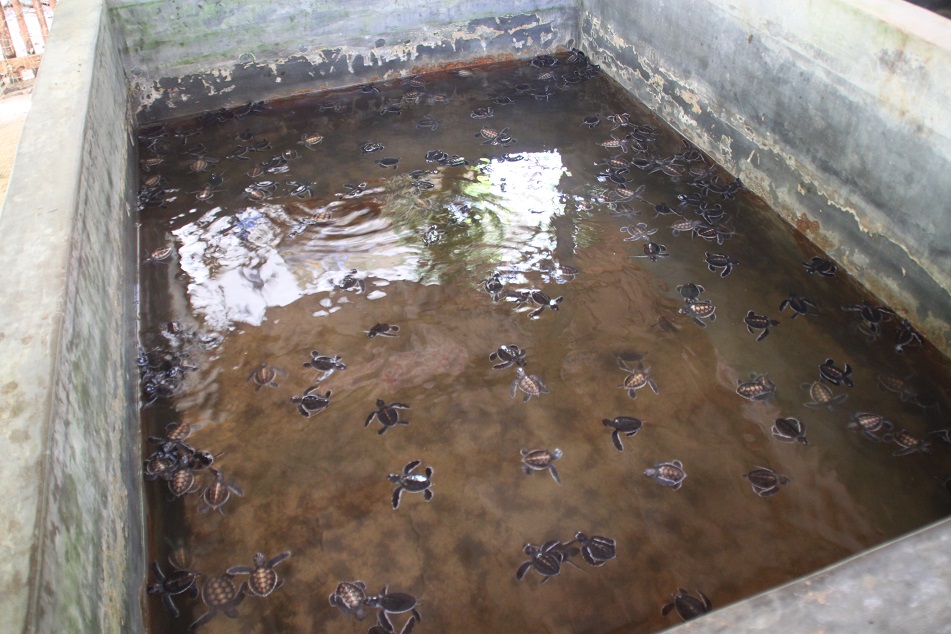
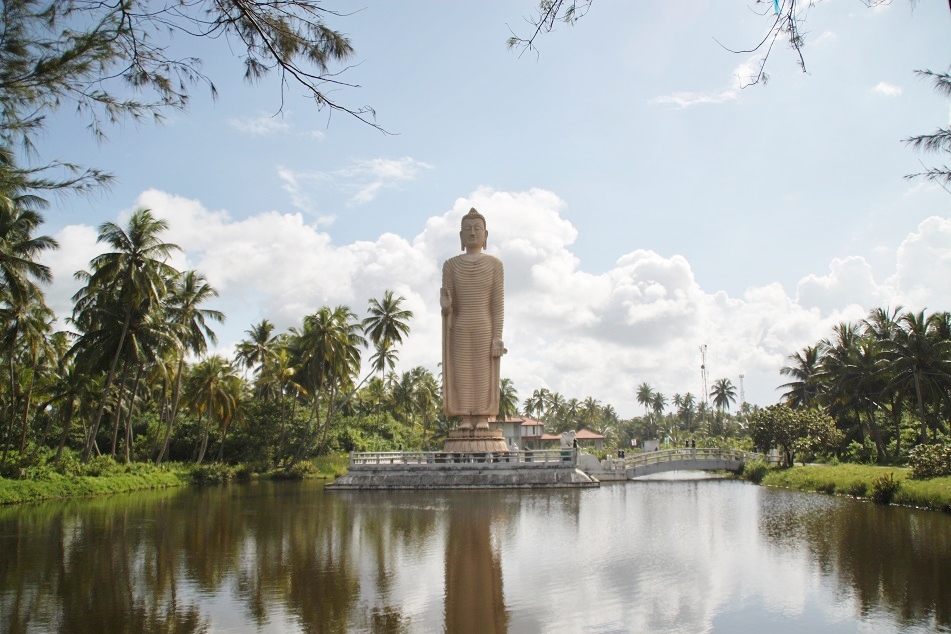
So tragic. I can still remember exactly where I was when I first heard about the tsunami. On a more uplifting note, though – that food!! YUM!
LikeLike
Hi Rebecca. Where were you at that time? The devastation was beyond belief, yet people are so resilient. Based on my observation the Acehnese, by and large, have recovered from the aftermath of the earthquake and the tsunami. But that is of course only based on my visual perception. Speaking of the food, Mie Aceh is something you need to try if you come to this part of Indonesia one day.
LikeLike
We were actually in Australia, boarding a flight the next day to Thailand – our first time ever flying overseas. Our families told us not to go, but we’d been dreaming and planning the trip for so long and we decided to go ahead. It was heartbreaking to see all the photos of missing loved ones in the streets of Bangkok.
LikeLike
Oh my… It must have been heartbreaking and overwhelming at the same time. But often from circumstances like this we are reminded that humans are resilient, and sometimes it takes such a cataclysmic event for us all to bring up the best qualities of ours.
LikeLike
Saya baru tau apa itu tsunami pas tsunami itu terjadi… tragis, menakutkan, mengerikan, mematikan. Saya tidak bisa membayangkan kalau saya berada disana saat itu.
Dan pada akhirnya Tsunami merubah segalanya.
LikeLike
Kita saja yang melihat dari TV bisa merasakan betapa dahsyatnya terjangan tsunami di Aceh pada tahun 2004 yang lalu. Apalagi orang-orang setempat yang hidupnya berubah drastis karena bencana ini. Banyak hikmah yang bisa diambil setiap terjadi bencana, mulai dari bagaimana mengedukasi masyarakat mengenai tindakan yang harus dilakukan saat bencana, hingga perencanaan kota yang lebih baik (di Museum Tsunami Banda Aceh ditampilkan layout yang disarankan untuk kota-kota pesisir).
LikeLiked by 1 person
Iya bam, banyak hikmah. Salah satunya pembangunan di aceh yang saya dengar dengar menggeliat setelah tsunami.
LikeLike
Betul, hal ini didorong oleh banyaknya bantuan dari berbagai belahan dunia, baik berupa dana pembangunan maupun sharing keahlian dari berbagai organisasi dan negara.
LikeLiked by 1 person
Uuuh… tsunaminya diangkat dalam cerita, jadi ingat banyak hal yang sangat memedihkan 😢😢, tapi hikmah besarnya juga bisa diambil. Semoga yang pergi diberikan kedamaian, yang ditinggalkan juga bisa mengikhlaskan.
Btw Bama, orang2 si Hikkaduwa itu, sy ga bs bayangkan situasinya saat tsunami terjadi. Kepisah jauh banget, ga rasa gempa,
LikeLike
Aduh belum selesai dha kepencet…
Iya orang2 yang di Hikkaduwa itu.. tiba2 diterjang tsunami… pdhal episentrumnya ribuan kilometer, dipisah lautan lhooo… iya kan… lautan… bukan selat atau sungai.. kan jauh banget ya…
LikeLike
Iya mbak, waktu saya ke Museum Tsunami yang di Banda Aceh perasaan saya campur aduk. Sedih campur haru. Pendidikan memegang kunci untuk meminimalisir jumlah korban, dan karena orang-orang di Hikkaduwa bahkan mendengar kata tsunami saja belum pernah, jadi mereka gak tau harus berbuat apa pas pantai surut secara abnormal. Beda dengan orang-orang di Simeulue yang secara turun temurun menceritakan pengetahuan mengenai apa yang harus dilakukan jika laut tiba-tiba surut. Oleh karena itulah jumlah korban jiwa di pulau tersebut bisa ditekan.
LikeLiked by 1 person
Thanks for the tsunami update. The news is always there for a disaster but forgets that some of us are interested in how location has recovered. Unfortunately, on the Lankan issue, the news was mainly about the west coast while the Tamil east coast was in a far worse state.
LikeLike
You’re welcome, Mallee. You are right about the Tamil east coast. When the tsunami hit, Sri Lanka was still in civil war. Hence the lack of coverage from that side of the island. I wish I had more time to explore the east coast when I was in Sri Lanka last October.
LikeLiked by 1 person
very good stuff again, BAma. I love how you meander from one topic to another in this post, and always bring us back to reality! Lovely shots. I’m so jealous of how both you and James take such great shots of food. I just can’t seem to get that right!!! Slogan for the day: respect mother nature…
LikeLiked by 1 person
Thanks Badfish. I thought of providing different perspectives in understanding the tsunami because, as always, nothing is as simple as it seems.
About the food photo, both of us always look for a table with enough amount of light whenever possible.
LikeLike
I’m always hearing those stories in Sri Lanka, people on the beach are always willing to talk to you about it. There’s no signs now of the tsunami as you said, only a few posts in some beaches south, telling you where to run in case of a tsunami…. It always creep me out when I see them.
LikeLike
One’s ordeal becomes an invaluable lesson for others. After the 2004 tsunami many places in Indonesia now have signs telling people which direction they should evacuate should a tsunami is imminent. The question is whether, after some time, people still learn about steps they need to take during an emergency situation, or they ignore it completely.
LikeLiked by 1 person
Yes that will be always the question…
LikeLike
Menyoal tsunami tahun 2004, aku jadi ingat di hari kejadian itu aku lagi ada di lepas pantai Natuna, Di minggu pertama aku kerja di field. Berita simpang siur waktu itu, termasuk adanya isu bahwa kemungkinan kami juga akan diterjang badai tsunami. Padahal nyatanya kami aman, karena gempanya khan berada di pesisir barat pantai Sumatera bagian utara. Tapi ada beberapa teman di sini yang rumahnya di Banda Aceh dan ikut jadi korban. Itu salah satu bencana paling memprihatinkan yang pernah aku ingat selama ini.
Btw, Sabang itu keliatan ‘mengundang’ banget. Pantainya bagus, terus deskripsi bawah lautnya juga bikin ngiler pengen ‘nyemplung’, dan makanannyaaaaaa ,,, duh! Kacau ini bacanya pas dompet kering dan jam lapar begini 😀
O iya, itu tempat nginep kalian asik banget. Mau dong nanti aku dikasih infonya yaaaa …
LikeLike
Pasti beberapa orang khawatir sama keselamatanmu waktu itu Bart, karena gak semua orang kan paham Geografi. Memang footage yang ditampilkan di TV waktu itu sangat bikin sedih sih, gak kebayang orang-orang yang berada di Banda Aceh waktu tsunami menerjang.
Sabang nyaman banget Bart. Jalanannya mulus, pemandangannya bagus, suasananya santai, dan (katanya) spot-spot snorkelingnya bagus-bagus. Oh dan kamu kalo ke Sabang harus makan Mie Aceh di warung yang aku cobain itu (ancer-ancernya agak susah sih tapinya, hehehe). Bart, dompet kering mbok ya disiram. Kamu dikelilingin laut gitu lho…
Sip sip, nanti kalo ada rencana ke Sabang kabarin aja. Aku masih simpen nomor kontak pengelola tempat nginep itu.
LikeLiked by 1 person
What is both sobering and uplifting is the way life goes back to normal after these cataclysmic events. The beaches are tranquil, the people go about their daily lives … and yet we know that something very, very scary happened here and still lurks beneath the surface as something that may well happen again. Your photos today are particularly evocative of the peaceful setting; it feels like a wonderful place to relax.
LikeLike
It’s really sobering to learn about the tsunami and its aftermath. They should include the lesson about earthquake and tsunami in the curriculum, so the lessons won’t be lost in future generations. On the island of Simeulue off the west coast of Sumatra the local people have been passing this story about what to do when the sea water recedes. It is likely that the wisdom passed on over generations emerged from a tsunami in the past. In 2004, despite its proximity to the epicenter of the earthquake, the number of casualties on the island was far lower than elsewhere in the region because most people knew they had to flee to higher grounds. If one only sees how Hikkaduwa and Sabang look now without learning about what happened back in 2004, he/she would probably never imagine that a calamity in such scale struck both places not too long ago.
LikeLiked by 1 person
Yum! Yum! The variety of lamb curry looks pretty enticing. Nice one Bama!
LikeLike
Both dishes require lots of spices, a vestige of Aceh’s historical significance in the ancient spice route. And of course, both were delicious! Thanks Victoria.
LikeLike
Hi Bama, all those dishes look delicious hope you enjoyed them. It’s hard to believe this is the place that was once hit by the biggest tsunami
LikeLike
Oh I did enjoy them so much I didn’t want to leave the island. 🙂 My visit to Weh was such a sobering experience, indeed.
LikeLiked by 1 person
Mie aceh!! Nice! ^^
LikeLike
Mie Aceh di Sabang memang enak banget, top markotop!
LikeLike
Nice write up! I still remember the day and l am grateful that we weren’t affected by the first wave. But having to relocate cos of the second, I can’t imagine what the big one could have been…
LikeLike
Wow, so you’re one of those people who were affected by the tsunami. Learning about the events that unfolded following the first shock is indeed very sobering.
LikeLiked by 1 person
I remember being completely shocked at the footage of the tsunami sweeping into the beach resorts on Thailand’s Andaman coast. One of the teachers at my school was in Phuket at the time and she told her students that she never wanted to talk about the things she saw on that fateful day. On a more positive note, it was very encouraging to visit both Aceh and Sri Lanka and witness how two of the hardest-hit regions had recovered from such an enormous natural disaster.
LikeLike
I can understand her trauma. Even for regular people like me the images of the devastation caused by the tsunami stay in my memory. Mental recovery will take much longer than physical, and I do hope one day she will be able to overcome her traumatic experience and live her life to the fullest again.
LikeLike